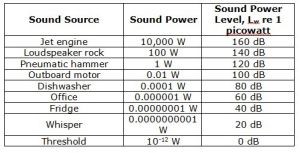0 item(s)
$0.00
Your cart is currently empty.
Sound Part One:
Acoustics and noise control play an important role in modern buildings. SAS is releasing the first part of five series on basic acoustic technical information. The series will consist of basic knowledge pertaining to sound. The information provided will serve as a basis for the determination, selection, and specification of products and systems, more suitable for noise and vibration control.
What is Sound?
A sound is a mechanical wave that results from the back and forth vibration of the particles. It is a physical alteration in a medium that can be detected by the human ear. All sounds are vibrations traveling through the air as sound waves. Sound waves are caused by the vibration of objects and radiate outward from their source in all directions.
Sound waves in the air are caused by variations in pressure. The vibrating body causes the medium (water, air, etc.) around it to vibrate. The variations of pressure originate in many ways, for example:
1. By a pulsating air current, such as that produced by the blades of a spinning fan.
2. When a current of air collides with an obstruction, as in an air outlet in a HVAC system
3. By the flight of an airplane, which creates shock waves.
4. By the vibration of a surface.
Sound Properties:
Speed of Sound
The speed of sound is the distance traveled per unit time by a sound wave as it propagates through an elastic medium. In dry air at 68°F, the speed of sound is approximately 343 meters per second. Air temperature has a significant effect on the speed of sound.
In common everyday speech, the speed of sound refers to the speed of sound waves in air. However, the speed of sound varies from substance to substance: sound travels most slowly in gases; it travels faster in liquids; and faster still in solids. For example, the speed of sound in a brick is 11 times higher than in the air.
Frequency
An audio frequency is characterized as a periodic vibration whose frequency is audible to the average human. The SI unit of audio frequency is the hertz (Hz). It is the property of sound that most determines pitch.
The generally accepted standard range of audible frequencies is 20 to 20,000 Hz, although the range of frequencies individuals hear is greatly influenced by environmental factors. Frequencies below 20 Hz are generally felt rather than heard. Frequencies above 20,000 Hz can sometimes be sensed by young people. High frequencies are the first to be affected by hearing loss due to age and/or prolonged exposure to very loud noises.
Wavelength
Wavelength is a property of a wave that is the distance between identical points between two successive waves. The distance between one crest or trough of one wave and the next is the wavelength of the wave. For example, the wavelength of light determines its color and the wavelength of sound determines the pitch. All sound waves are traveling at the same speed-the speed of sound. So waves with a shorter wavelength arrive (at your ear) more often than longer waves.

Acoustic Pressure
Sound pressure is the local pressure deviation from the ambient (average, or equilibrium) atmospheric pressure, caused by a sound wave. In the air, sound pressure can be measured using a microphone, and in water with a hydrophone. The SI unit of sound pressure is the pascal (Pa).
Diffraction of Sound
Diffraction describes the change in a wave’s direction as it travels between or around barriers. In diffraction, waves actually bend around objects that they encounter in their path or bend through openings in between two barriers.
Sound Power
Acoustic power is the rate at which energy is emitted, reflected, transmitted or received, per unit time. Sound power is expressed in watts. It is the power of the sound force on a surface of the medium of propagation of the sound wave. For a sound source, unlike sound pressure, sound power is neither room-dependent nor distance-dependent.
Table 1 shows the typical values of sound power emitted by different sound sources.

Solving sound issues can be a complex problem. Understanding the parts and pieces can go a long way to helping you find a solution for your sound or noise problem. Sound Acoustical Solutions can assist you with absorbing or isolating problematic sound issues. Explore our website to learn more about the solutions for curbing excessive noise.